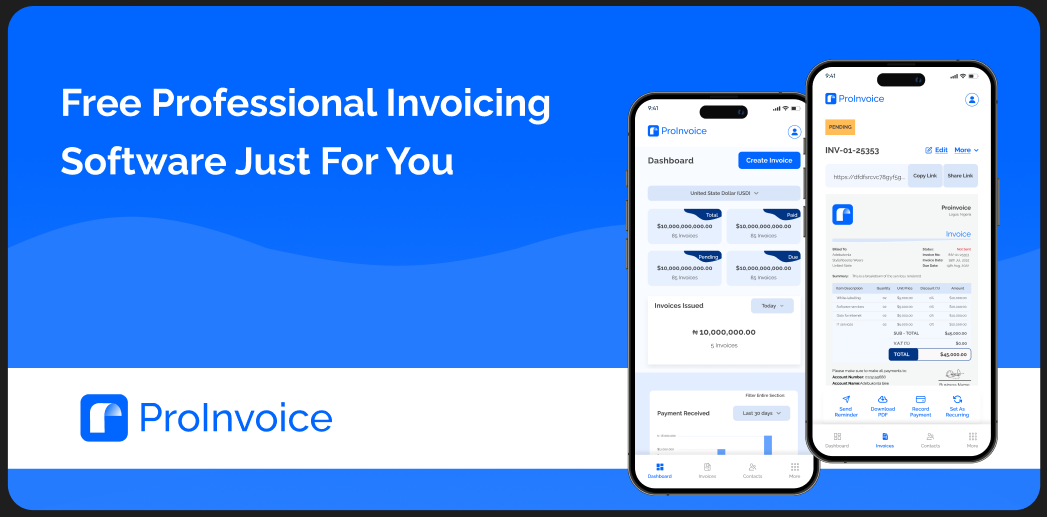Running a business in South Africa means keeping a firm grip on your expenses—to budget effectively, simplify tax filing, and make informed decisions. When you shift from hobbyist to serious entrepreneur, you need tools that let you manage costs with clarity and confidence. ProInvoice fits the bill by making expense tracking, invoice generation, and financial records both accurate and effortless.
Here’s your practical, step-by-step guide to managing and tracking business expenses—South African style.
Stay organized as you grow. Use ProInvoice to manage billing and client relationships with ease.
1. Create a Realistic, Detailed Budget
Start with a budget tailored to your business:
- Outline expected income streams and list all recurring expenses—rent, utilities, supplies, marketing, and so on.
- Separate fixed costs from variable ones and include a buffer for unforeseen costs.
- Review and update your budget regularly—ideally monthly—to stay aligned with reality.
A dynamic budget helps you anticipate costs, avoid overspending, and stay agile in changing conditions.
2. Keep Business Finances Separate
Mixing personal and business finances complicates accounting and taxes. Instead:
- Open a dedicated business bank account.
- Use a separate credit card or electronic payment method for business purchases.
This separation simplifies reconciliation and ensures accurate records—critical during tax time or audits.
3. Track Expenses in Real-Time
Don’t wait until month-end to log expenses:
- Record transactions immediately—this improves accuracy and minimizes loss of receipts.
- If staff incur expenses, ask them to submit records promptly.
ProInvoice syncs income records and helps you see expenses alongside your billing—providing real-time clarity with minimal effort.
4. Preserve All Documentation
Accurate expense tracking starts with documentation:
- Save receipts, invoices, and bank transaction records.
- Digitize physical receipts—snap a photo and store it safely.
- Back up digital records often.
Every rand matters, especially when looking to claim deductions during tax season.
5. Use Simple, Clear Categorization
Assign each expense to categories like travel, marketing, or supplies. Clear categorisation:
- Helps you understand expense patterns.
- Makes reconciliation and budgeting easier.
- Supports accurate tax filing through expense grouping.
ProInvoice keeps your income and expenses organized—with categories that make accounting smoother.
6. Reconcile Accounts Promptly
Reconciliation keeps your records accurate:
- Each month, compare your accounting data to your bank statements.
- Address any mismatches before they snowball.
- This practice ensures your books reflect reality—and saves headaches later.
7. Monitor Cash Flow Closely
Understanding where your money comes and goes is vital:
- Use cash flow statements to assess liquidity.
- Monitor when expenses are rising and adjust spending effectively.
Consistent tracking helps keep operations stable—even during lean periods.
8. Analyze and Optimize Spending
Small savings add up:
- Identify non-essential costs—subscriptions, unused services, duplicate tools.
- Negotiate with suppliers for better rates or terms.
- Consider postponing investments until cash flow improves.
Smart, ongoing expense optimization strengthens your financial resilience.
9. Leverage Tax Deductions Wisely
Many business costs are deductible in South Africa:
- Operational costs like rent, supplies, and travel can reduce taxable income—if properly documented.
- If you work from home, a pro-rata portion of your home expenses may be deductible.
Having organized, traceable expense records via ProInvoice makes claiming legitimate deductions smoother and more credible.
10. Automate and Streamline with the Right Tools
Automation reduces manual errors and saves time:
- Capture and categorize expenses faster.
- Automate recurrent entries and sync with bank feeds where possible.
- Consolidate invoices, receipts, and payments for easy oversight.
ProInvoice streamlines this by linking invoicing with expense tracking—so your financial data remains integrated, accurate, and ready for review.
Summary Table: Best Practices for Expense Management
| Practice | Purpose & Benefit |
|---|---|
| Create a detailed budget | Set spending expectations and guard against overspending |
| Separate business accounts | Maintain clarity and simplify reconciliation |
| Track expenses immediately | Improve accuracy and avoid lost receipts |
| Preserve documentation | Support claims and audits with proof |
| Categorize expenses smartly | Understand spending and simplify tax filing |
| Reconcile regularly | Keep books accurate and catch issues early |
| Monitor cash flow | Ensure liquidity and financial stability |
| Review and optimize spending | Cut waste and negotiate savings |
| Maximize tax deductions | Reduce tax liability with valid documentation |
| Use automation tools | Save time, reduce errors, and stay organized |
Final Thoughts
Managing and tracking business expenses isn’t just about survival—it’s about strategic empowerment. With every receipt logged and every rand accounted for, you make better decisions, reduce stress, and strengthen your business’s financial foundation.
And when paired with ProInvoice, your expense management becomes seamless—from accurate invoicing to expense tracking and tax readiness. Ready to simplify your expense journey? Sign up for ProInvoice today and take your financial control to the next level.













